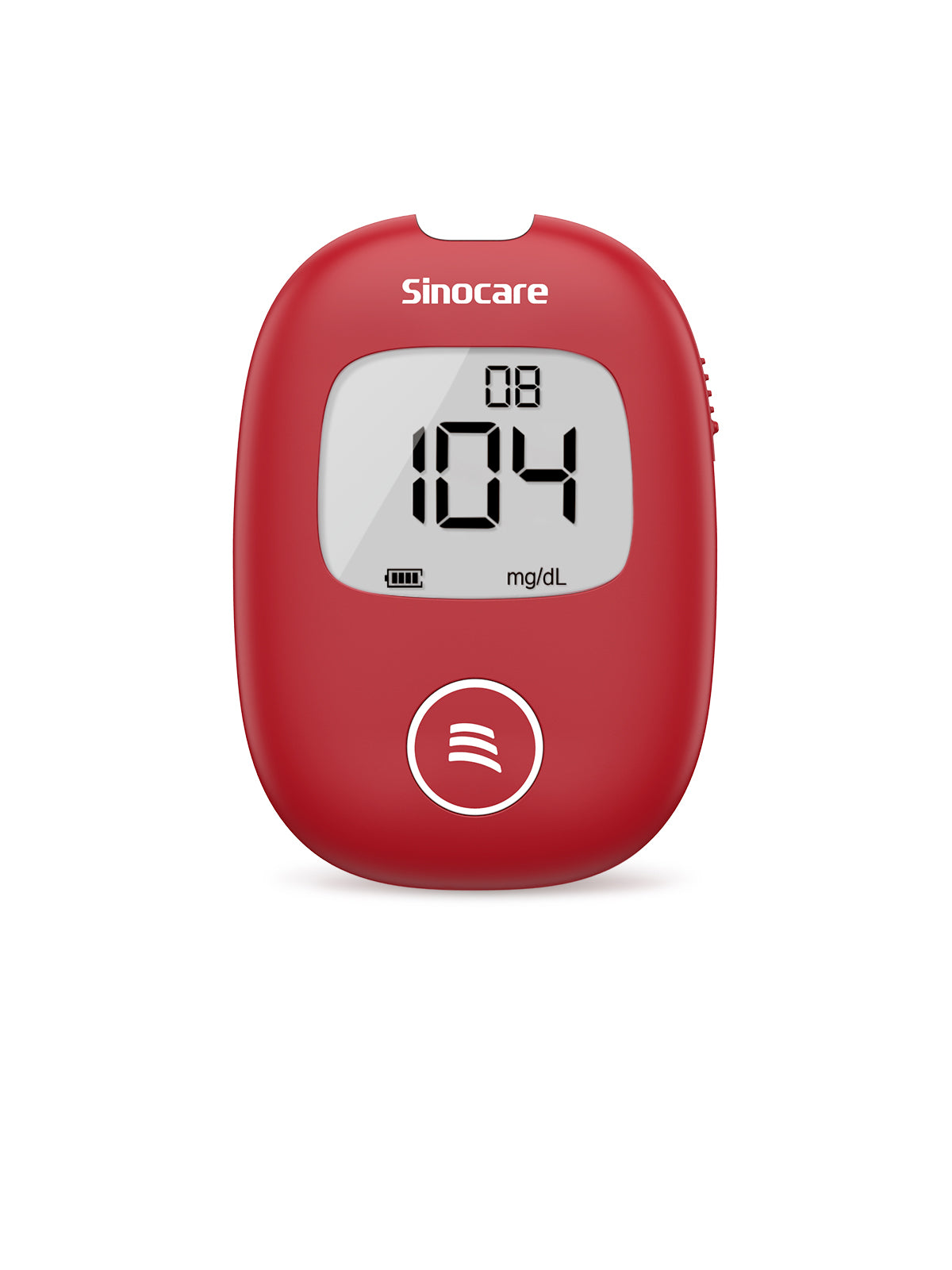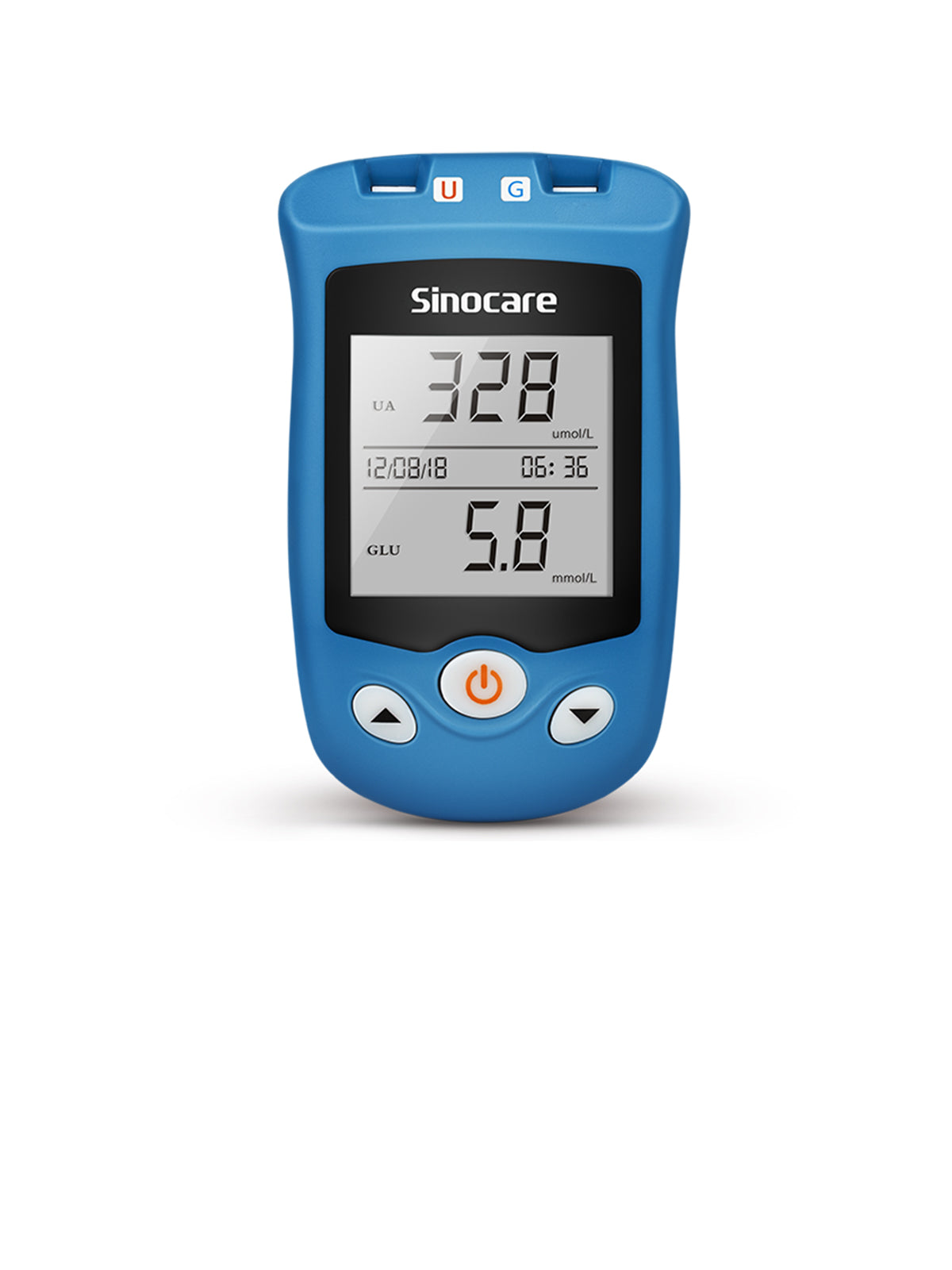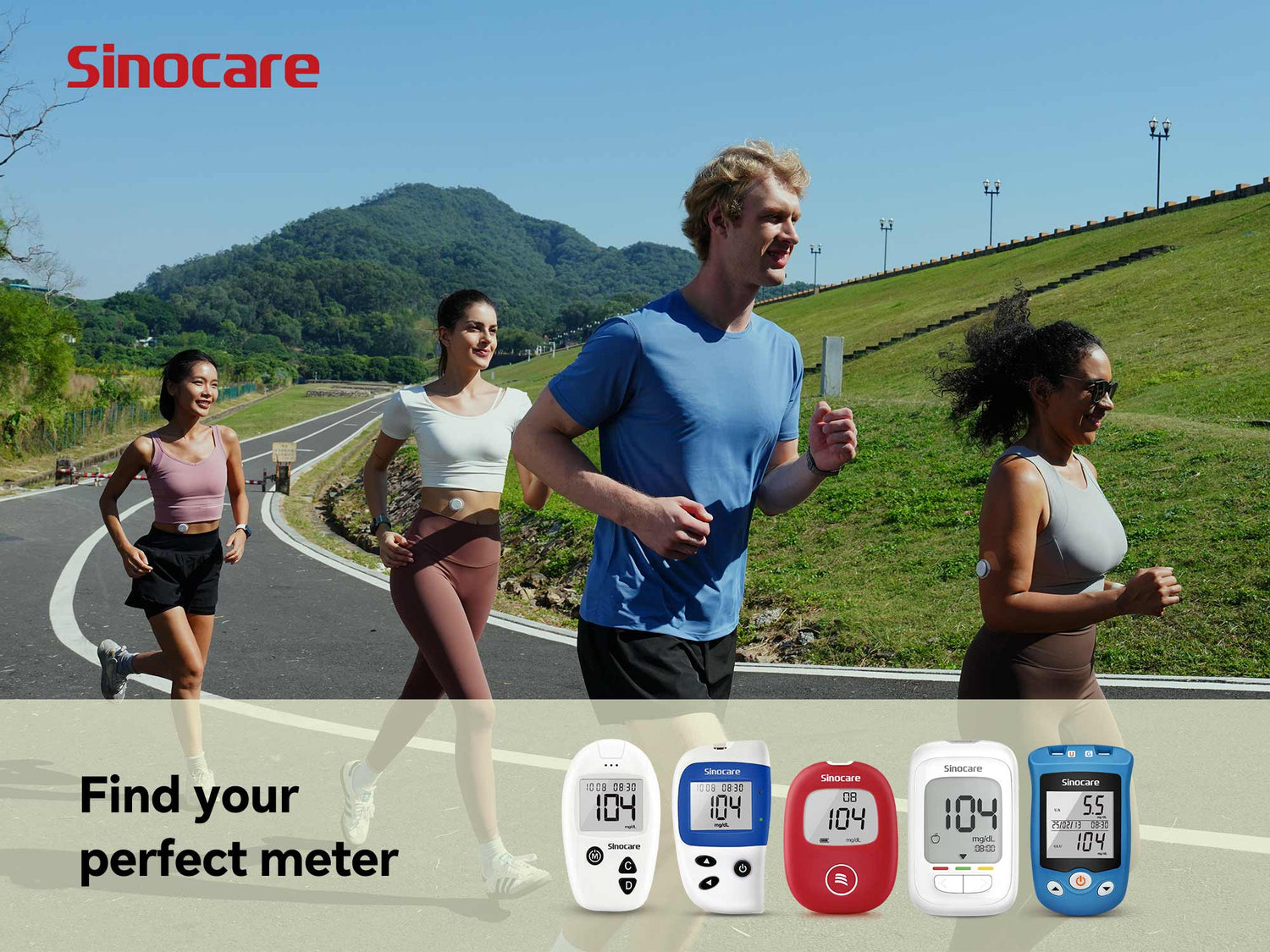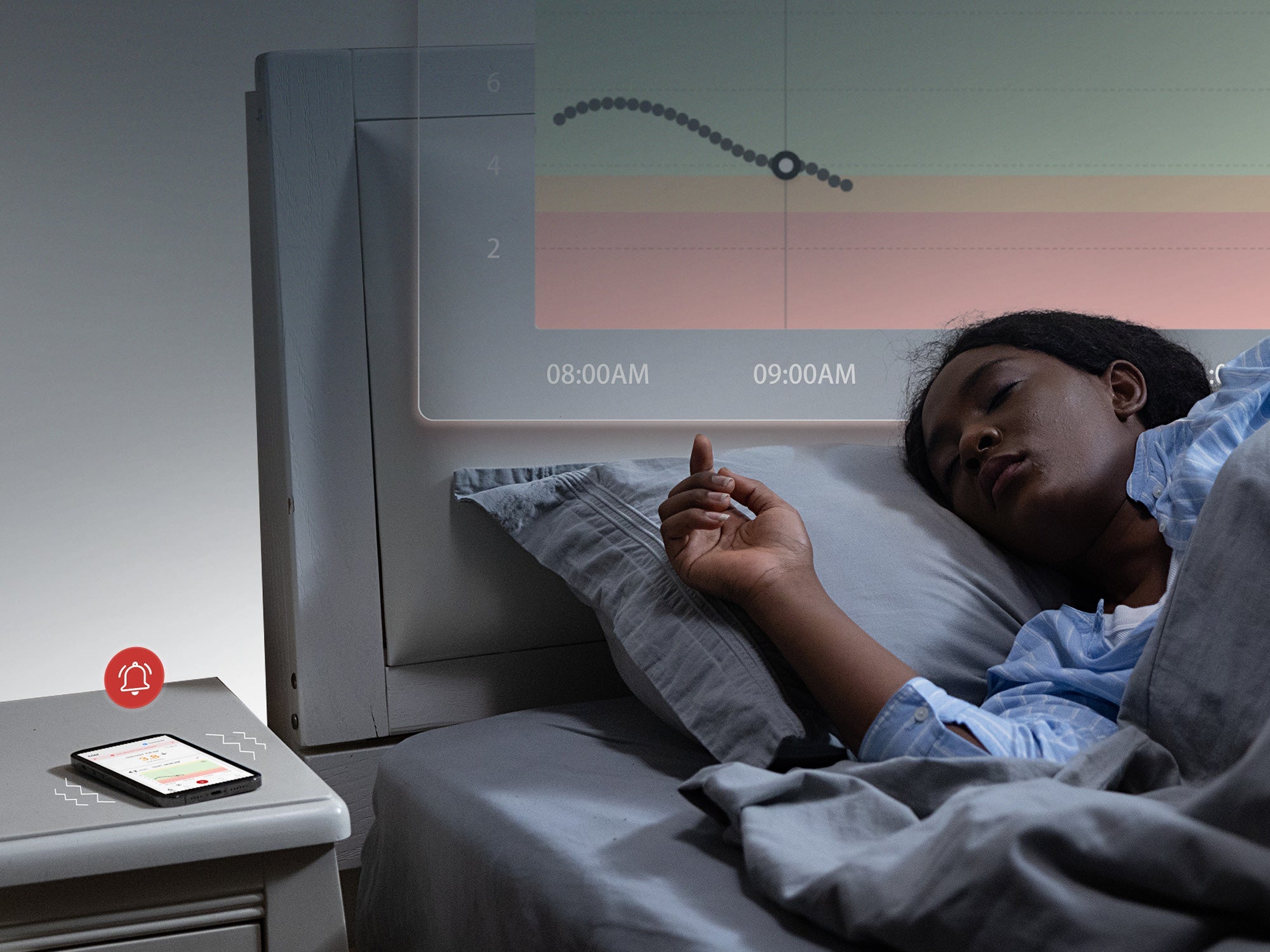Nothing beats physical exercise when it comes to managing diabetes. Regular activity improves your blood sugar control and makes your body more sensitive to insulin.
But certain exercises can also cause a sudden dip or rise in blood glucose levels. Monitoring blood sugar before, during or after workouts is thus important to keep your diabetes in check. In this article, we’ll walk through when and how to do it safely and accurately.
How Exercise Changes Your Blood Sugar Level
When you are exercising, your muscles are forced to burn more calories than usual. And to burn more calories, they need more fuel, i.e., glucose. The muscles then pull glucose from your bloodstream (and from stored glycogen in your muscles and liver) even with little or no insulin present. That’s why your blood sugar levels usually drop during and shortly after steady aerobic exercise like walking, jogging, or cycling. Each workout also temporarily makes your cells more sensitive to insulin [1].
In contrast, a short spike in blood glucose levels can occur from very intense or anaerobic exercise, such as sprinting or heavy lifting work. Intense physical activities activate the release of stress hormones (such as adrenaline), which signal your liver to release glucose into your bloodstream.
But these sudden rises in blood sugar are usually temporary. Your levels will typically get back to the normal range within a few hours as you recover. You may perform a light cooldown (easy cycling or walking for 10–15 minutes) after intense workouts to bring that spike down a bit faster [1, 2].

When to Test Blood Sugar
If you take insulin or certain diabetes medications that help increase insulin release, you have a high risk of experiencing dips in blood sugar during workouts. It’s best for you to keep a glucometer like Sinocare Safe AQ Smart and monitor your glucose level before, during and after exercise.
But if your diabetes is not insulin dependent (type 2) and you control your blood sugar with diet or metformin alone, there’s little need for you to check as frequently [2, 3].
How to Test Before, During and After Exercise
Test right before you start your workout. Ideally, about 15–30 mins before you start. A good target to begin exercise is around 126–180 mg/dL (7–10 mmol/L), but the safe range is about 90 to 250 mg/dL (5.0 and 13.9 mmol/L) [2, 3].
If you plan to be active for a long time (over an hour), check your blood sugar about every 30 minutes (or at least every 45 minutes) during the activity. Watch for signs of low blood sugar while exercising, such as shaking, weakness, dizziness or confusion. If any of them show up, stop and check your glucose level [4].
Follow the below guidelines on carb intake or other actions before and during exercise. This guideline is adapted from Colberg et al. [2] and Zaharieva et al. [3].
- Low glucose (<90 mg/dL or <5.0 mmol/L): Take 15-30 g of fast-acting carbs before exercise. Consume extra carbs if you’re doing a moderate-intensity workout for a prolonged period (~0.5-1.0 g/kg body weight per hour).
- Normal range (90-150 mg/dL or 5.0–8.3 mmol/L): Start consuming carbs at the onset of exercise. Follow the same per-hour carb guideline (~0.5–1.0 g/kg body weight).
- Moderately high (150-250 mg/dL or 8.3–13.9 mmol/L): Start exercising, but delay carb intake until your blood sugar level falls below 150 mg/dL.
- High (250-350 mg/dL or 13.9–19.4 mmol/L): Test for ketones first. Avoid any exercise if you’ve got moderate or high ketone levels. But if you have low ketones, do only mild-to-moderate exercise. Perform intense activity only when your glucose levels are below 250 mg/dL.
- Very high (≥350 mg/dL or ≥19.4 mmol/L): Check ketones. Don’t exercise if ketones are present in moderate-to-large amount. If they are in a trace amount or negative, consider conservative insulin correction. Perform only mild-to-moderate exercise. Avoid intense exercise until your blood sugar drops.
Check your blood sugar as soon as you finish your workout. You’re likely to see dips in the glucose level after aerobic exercise but a mild rise following high-intensity workouts. Sometimes, however, blood sugar lows may kick in hours later, so it’s better to take a reading again a couple of hours after exercise (around 2–3 hours later) [4].
How to Test Blood Sugar While You Work Out
Your blood sugar checks shouldn't get in the way of your workout. If you use a fingerstick glucose meter like the Sinocare Safe Accu, plan a quick break every 30-45 mins for tests. Make sure you have your meter, test strips, and a lancing device in your gym bag or a small pouch.
Pro tip: Carry a hand sanitizer, some hand wipes, or a small bottle of water to clean your fingers if you’re outdoors or at the gym. Dry your hands before testing. That’s because you’ll get a more accurate reading with clean, dry fingers.
Now, do a quick fingerstick, note the result (or just remember it if you’re logging later) and get back to your activity. This may at best take a minute or two but you may also make it even shorter (<1 min) with a bit of practice.
If you’re below your target, you may need to eat fast-acting carbs. If you’re within range or a bit high, you’re good to continue. See the guideline described in the above section.

Safety Kit and Rules for Exercising
Frequently Asked Questions (FAQs)
Does exercise lower blood sugar?
Yes, mild to medium intensity exercises like walking or cycling are good at lowering blood sugar during and after the activity. But you’ll experience the opposite (i.e., a short spike in glucose levels) with high-intensity exercises.
How long does blood sugar stay elevated after exercise?
Blood sugar typically rises from a high-intensity workout, but such spikes in glucose levels often don’t last long and come back to the normal range within a few hours on their own. These short-term effects can best be described as an adrenaline rush. In some cases, once the effects of stress hormones wane, your blood sugar might actually dip later on (especially at night after evening workouts). Thus, it’s a good idea to recheck about 2-3 hours after exercise [4].
What should my blood sugar be before I work out?
The safe range to start exercising is between 90 mg/dL (5.0 mmol/L) and 250 mg/dL (13.9 mmol/L), but the ideal range to aim for is roughly 126–180 mg/dL (7–10 mmol/L) [2, 3]. See the guidelines described in the “How to Test Before, During, and After Exercise” section to learn about carbohydrate intake and other actions you should take before and during workouts.
Take Charge of Your Fitness and Blood Sugar with Sinocare
Managing blood sugar during exercise might feel overwhelming at first, but it's so much easier when you have the right tools. Sinocare offers a wide range of easy-to-use blood glucose monitors and health devices to fit your lifestyle.
Looking for something portable and painless? The Sinocare Safe AQ Smart glucometer is lightweight, travel-friendly and code-free, giving you an accurate result in just 5 seconds with a tiny drop of blood (0.6 μL)
Need to track uric acid along with blood sugar? Check out the Sinocare Safe AQ UG, a 2-in-1 meter that allows you to measure both blood sugar and uric acid. Perfect for those managing gout along with diabetes.
And if you’re after a premium device that has a large memory, provides a blood ketone reminder and is easy to use, go for Sinocare Safe AQ Pro I. You may also try models like the Safe Accu and Safe Accu 2. They also have large memory capacities and provide results in seconds.
To sum up, all Sinocare glucose monitors are designed with the end user in mind. That’s why they typically have large displays, simple one-button operation, complete glucose kit and no-coding strips. They prioritize accuracy (meeting ISO standards) and affordability.
References
1. Fitzpatrick, R., Davison, G., Wilson, J. J., McMahon, G., & McClean, C. (2022). Exercise, type 1 diabetes mellitus and blood glucose: The implications of exercise timing. Frontiers in Endocrinology, 13, 1021800.
2. Colberg, S. R., Sigal, R. J., Yardley, J. E., Riddell, M. C., Dunstan, D. W., Dempsey, P. C., ... & Tate, D. F. (2016). Physical activity/exercise and diabetes: a position statement of the American Diabetes Association. Diabetes care, 39(11), 2065.
3. Zaharieva, D. P., & Riddell, M. C. (2015). Prevention of exercise-associated dysglycemia: a case study–based approach. Diabetes Spectrum, 28(1), 55-62.
4. Mathew, T. K., Zubair, M., & Tadi, P. (2025). Blood Glucose Monitoring. StatPearls [Internet].










Leave a comment
All comments are moderated before being published.
This site is protected by hCaptcha and the hCaptcha Privacy Policy and Terms of Service apply.